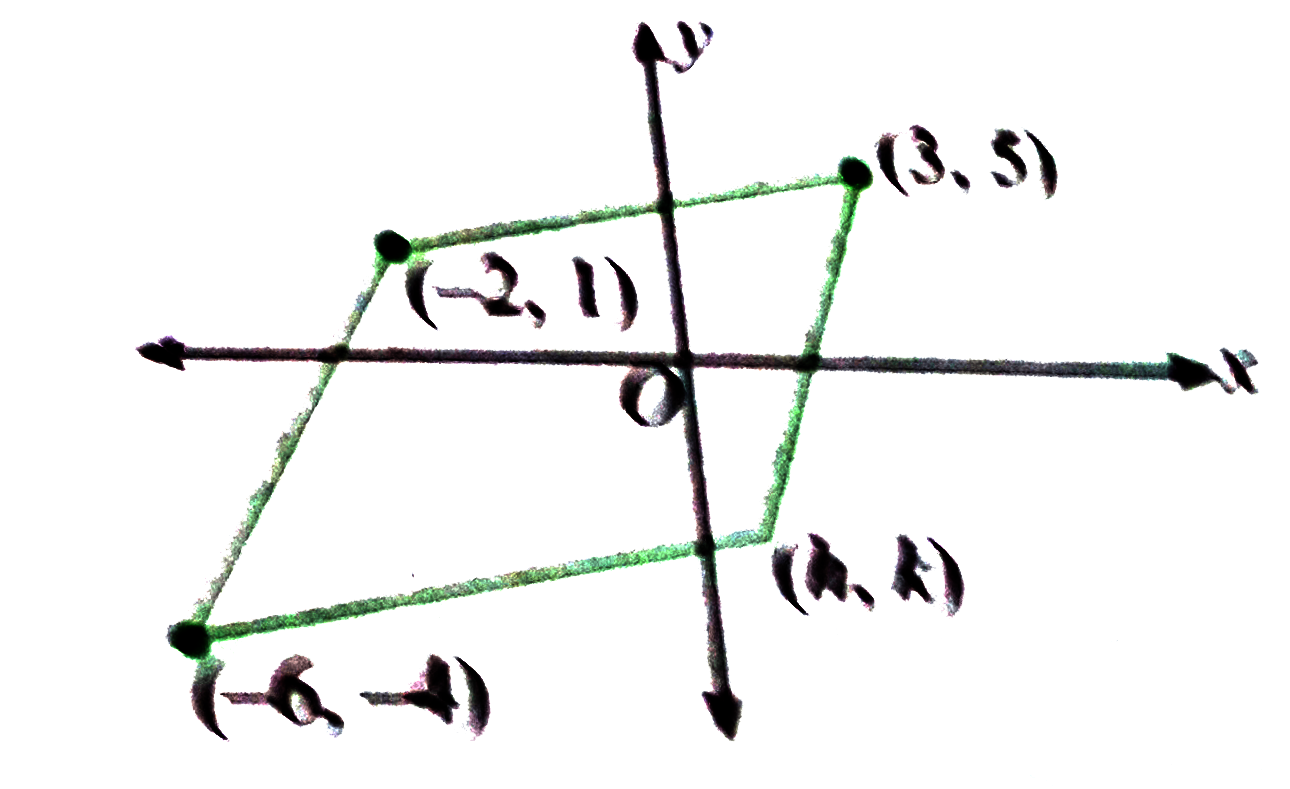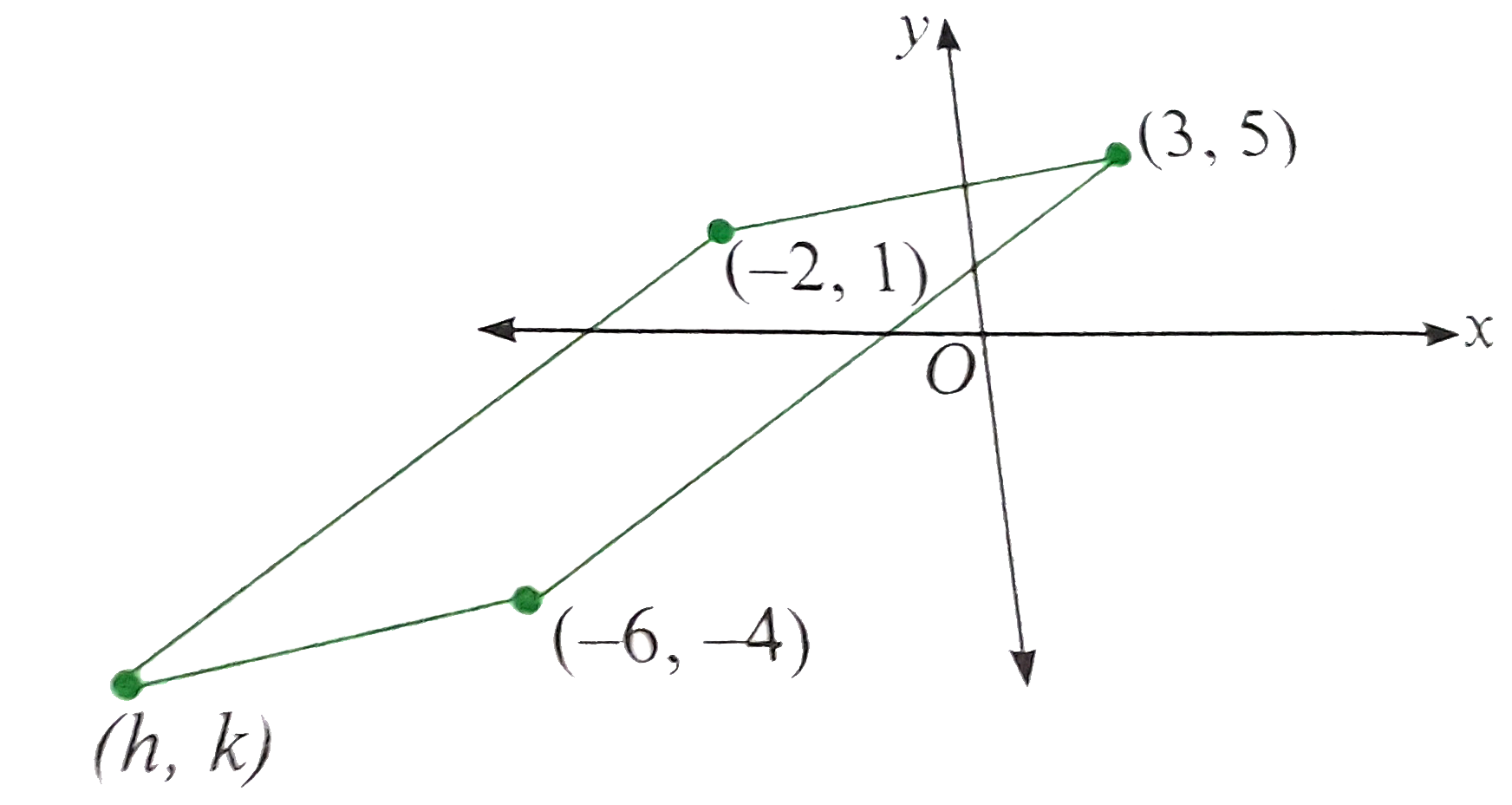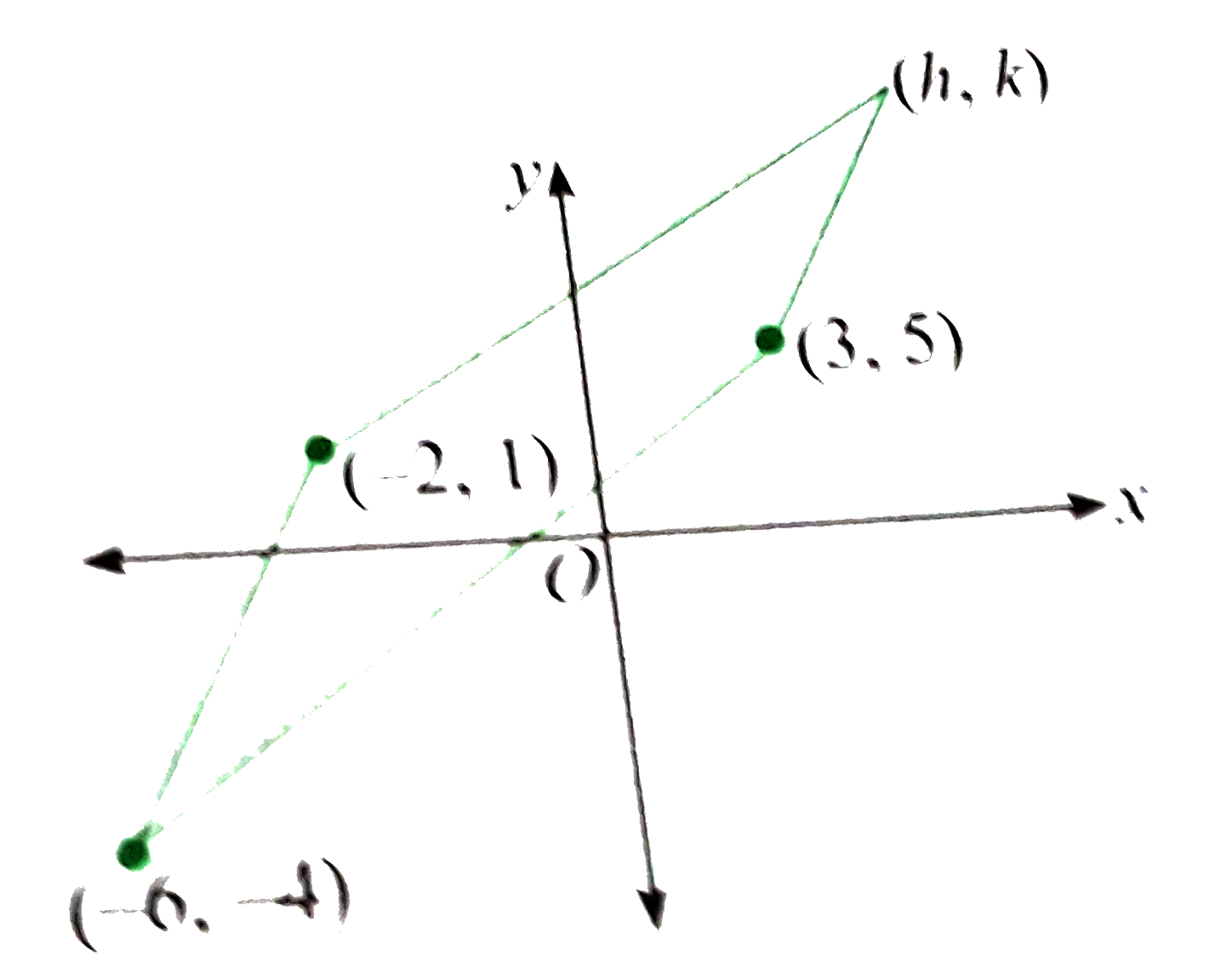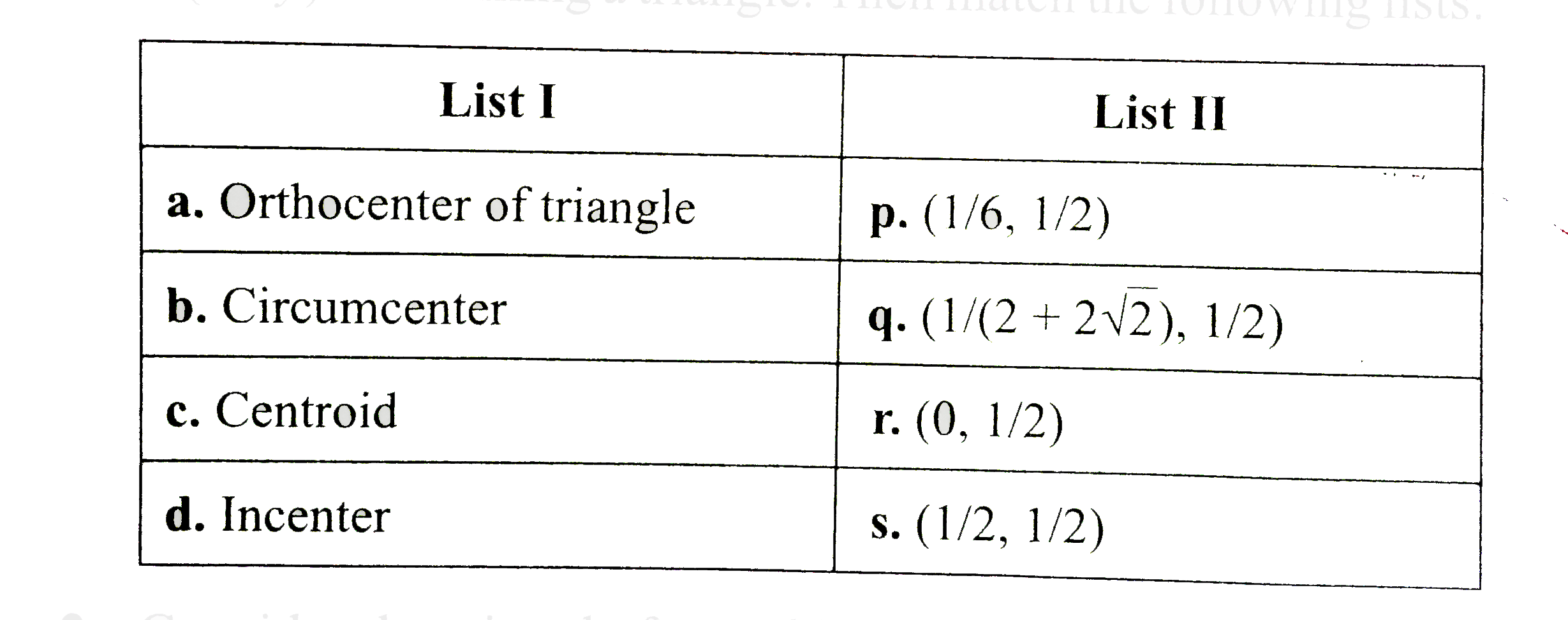If (-6,-4), (3,5),(-2,1) are the vertices of a parallelogram, then remaining vertex cannot beSolution in Bengali
(0,−1)
(7,10)
(-1,0)
(−11,−8)
The correct Answer is:B, C, D
If the remaining vertex is (k,k) then

h−2=−6+3,k+1=5−4
or h=−1,k=0

h+3=−6,k+5=−4+1
or h=−11,k=−8

h−6=3−2,k−4=5+1
or h=7,k=10
Topper's Solved these Questions
- COORDINATE SYSYEM Book:CENGAGE PUBLICATIONChapter:COORDINATE SYSYEM Exercise:Linked
Explore 10 Videos
- COORDINATE SYSYEM Book:CENGAGE PUBLICATIONChapter:COORDINATE SYSYEM Exercise:Matrix match type
Explore 2 Videos
- COORDINATE SYSYEM Book:CENGAGE PUBLICATIONChapter:COORDINATE SYSYEM Exercise:Exercises
Explore 58 Videos
- COORDINATE SYSTEMBook:CENGAGE PUBLICATIONChapter:COORDINATE SYSTEMExercise:Multiple Correct Answers Type
Explore 2 Videos
- CURVE TRACINGBook:CENGAGE PUBLICATIONChapter:CURVE TRACINGExercise:EXERCISES
Explore 22 Videos
Similar Questions
For points P=(x1,y1)and Q=(x2,y2) of the co-ordinate plane a new distance d(P,Q)=|x1−x2|+|y1−y2| is defined .Let O(0,0)and A(3,2). The set of points in first quadrant which are equidistant from O and A is
View SolutionConsider the lines represented by equation (x2+xy−x)×(x−y)=0 forming a triangle. Then match the following lists:

View SolutionABC is an isosceles triangle. If the coordinates of the base are B(1,3) and C(−2,7) , the coordinates of vertex A
View SolutionCoordinates of points on curve 5x2−6xy+5y2−4=0 which are nearest to origin are
View SolutionFind the derivative of y=sin2x−cosx
View SolutionIf (−6,−4),(3,5),(−2,1) are the vertices of a parallelogram, then the remaining vertex can be (a)(0,−1) (b) 7,9) (c)(−1,0) (d) (−11,−8)
View SolutionThree vertices of a parallelogram are (1, 1), (2, 4) and (3,5), then the fourth vertex of the parallelogram can be:
View SolutionIf (−6,−4),(3,5),(−2,1) are the vetices of a prallelogram. Then the remaining vertex can be
View Solutionएक समांतर चतुर्भुज, जिसके शीर्ष, एक क्रम में A(1,2),B(4,y),C(x,6) और D(3,5) हैं पर विचार कीजिए।
समांतर चतुर्भुज का क्षेत्रफल क्या है?
View SolutionIf (-6, -4), (3, 5), (-2, 1) are the vertices of a parallelogram, then remaining vertex can be
View SolutionIf A(3,5),B(−5,−4),C(7,10) are the vertices of a parallelogram taken in order, then the coorinates of the fourth vertex are:
View SolutionThe fourth vertex of a parallelogram,whose consecutive vertices are (3,−4),(−2,1)and(-6,5) is
View SolutionIf (−6,−4) and (3,5) are the extremities of the diagonal of a parallelogram and (−2,1) is its third vertex , then its fourth vertex is
View Solutionএকটি সামান্তরিকের পরপর তিনটি শীর্ষবিন্দু A(3,5), B(-5,-4), C(7,10) হলে তার চতুর্থ শীর্ষবিন্দুর স্থানাঙ্ক হবে-
View SolutionThe points (-1, 0) and (-2, 1) are two vertices of a diagonal of a parallelogram. If (-6, 5) is the third vertex, then the fourth vertex of the parallelogram will be
View SolutionIf the vertices of a parallelogram are serially A (3,5), B {-5, -4), C (7,10), the fourth vertex will be
View Solution
